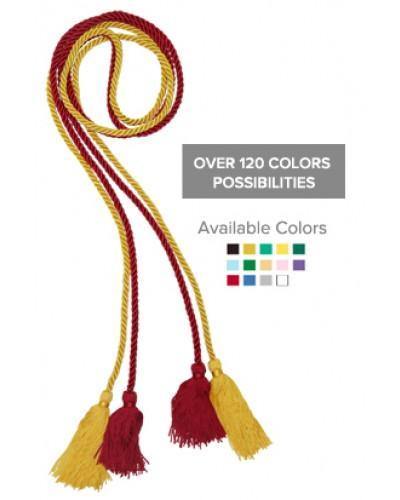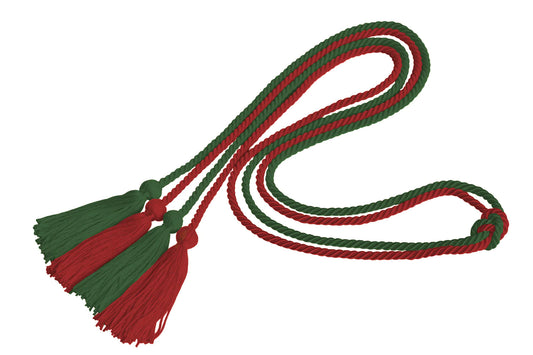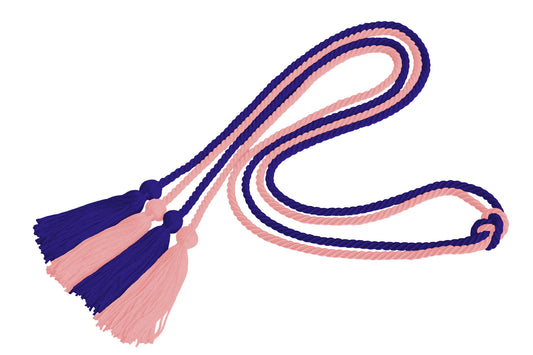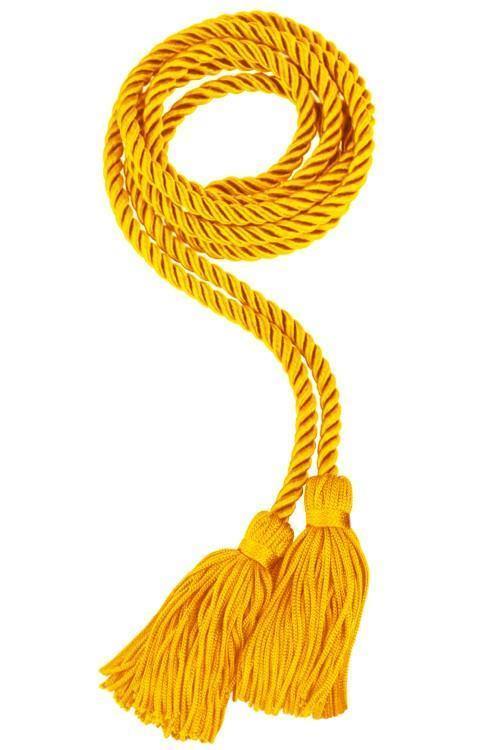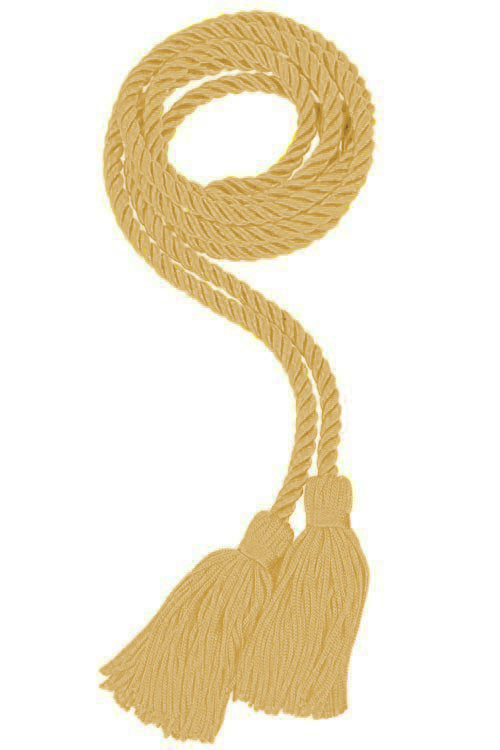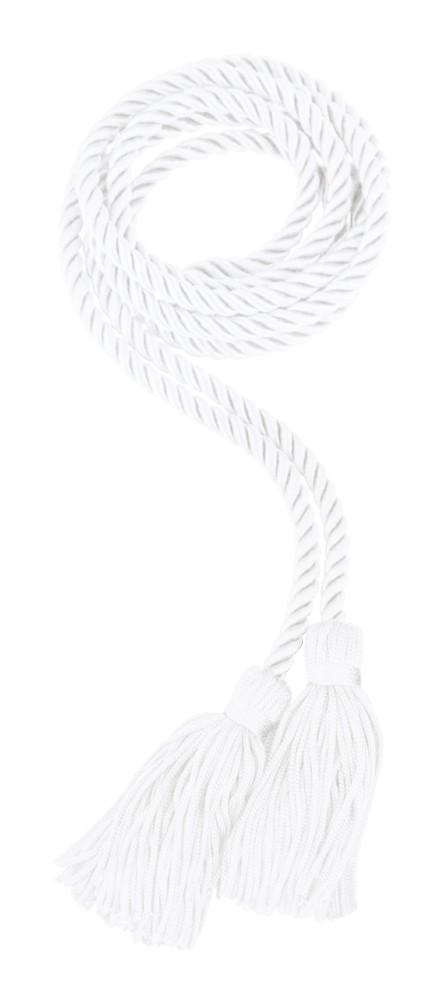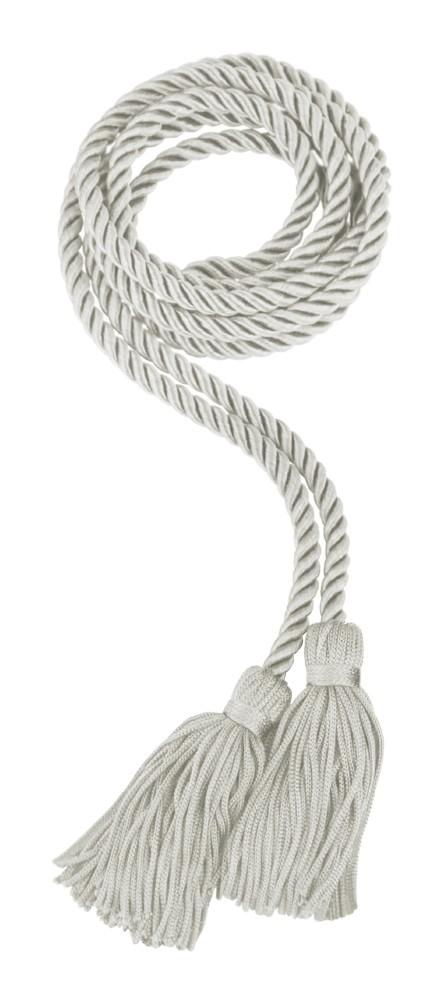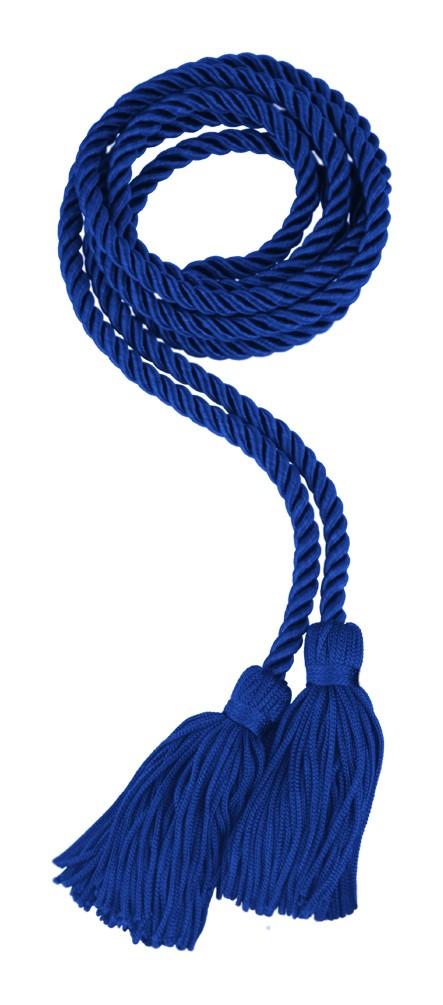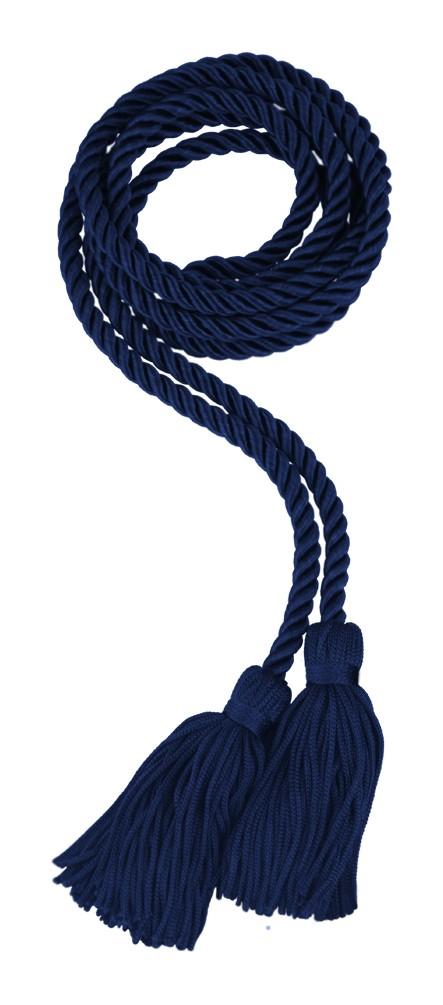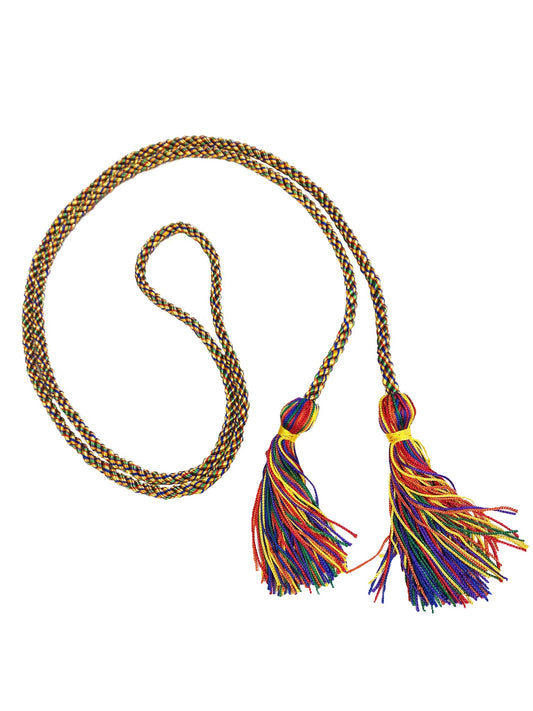Graduation Cords
If you thought those graduation cords are just there for decoration, you’re wrong. They mean much more than you can ever imagine. But before we get deeper into that, let’s understand the meaning of graduation cords first.
The term graduation cord refers to a universal ward, which is usually placed around students’ necks as a way of recognizing their excellence in various areas.
These colorful graduation honor cords are made from intertwined thick strings to reflect in a rope-like structure. They are then fitted with tassels at both ends for a perfect look.
That said, always keep in mind that graduation cords are also commonly referred to as honor cords or graduation ropes. So, whenever you hear either of the names, know they mean the same thing.
Whether you’re graduating from high school or university, this is one of the greatest life accomplishments and privileges you shouldn’t take for granted. That explains why these graduation ceremonies take place publicly-to give a worthy public recognition and presentation of student achievements in terms of diplomas and awards.
That’s why, it’s always important for the graduating students to wear their caps, gowns, and other formal accessories during the graduation ceremony.
But, is there any meaning attached to the graduation ropes? Since universities and high schools tend to give their graduates honor cords as recognition for their academic and non-academic accomplishments. Therefore, we can simply say that graduation ropes are a reflection of the graduates’ association with one or several honor societies, sororities, or even fraternities.
So, in any graduation ceremony, graduates adorn themselves with various accessories, one of them being the honor cord. As mentioned earlier, the cord comes in numerous colors, each signifying a different meaning.
Sounds interesting, right? Read on for some more juicy details on graduation ropes.
In most graduation ceremonies, all graduates might be in the same uniform, but in different caps and gowns. Why? Because most of the time, their standard caps and gown attires reflect their different achievements and academic success.
If you look keenly, you will notice that some students wear decorative cords, complete with a drape on each side to look like a two-neck link. Others might be wearing a decorative graduation cap with some sort of fabric print or rhinestones. Whichever the case, these students are simply showcasing what they have achieved, or as a way of expressing gratitude for their accomplishments.
Graduation Honor Cords
Now that you already understand what a graduation rope is, let’s take a look at the honor cords. Remember, we said earlier that these two can be said to mean the same thing. But sometimes, they can be a little different.
As its name suggests, an honor cord is usually a long multi-colored/single-colored cord complete with a tassel on each end. The tassel of the honor cord is made up of intertwined strands for a beautiful appearance.
Graduates usually wear their honor cords in pairs and around their necks with the ends left to hang freely in front of their gowns. They complete the look by bounding together the midpoints of the two cords.
Most of the time, when a graduate wears an honor cord, it’s because they want to display their society's honor or distinction.
However, in case a student receives a high-level honor such as summa cum laude, Magna cum Laude, or cum Laude, they get to receive honor cords from their respective colleges. The colors used on each honor cord have a significant meaning. It could be about the graduates’ achievements or affiliations within their high school or college.
Also, graduation cord colors can be worn depending on the GPA. Still, other schools and high schools tend to give out honor cords regardless of the academic achievements of the graduates to signify some other achievements. It all depends on the type of school/high school one is graduating from.
If an honor cord is given to signify academic achievements, you might notice three-tier. Each tier is likely to represent each GPA and the cord color specifications. However, these requirements vary from school to school, but the guideline is generally the same.
For instance, in most schools, students with a cumulative GPA of 3.5 are considered to have graduated Cum laude, those with a GPA of 355 and above Magna cum laude, and Summa cun Laude graduates have to attain a GPA of 4.0 and above. However, all these depend on the degree one was undertaking. But generally, students within the GPA categories shouldn’t have any grade below A.
So, even if some schools use percentiles in grading, and a combination of other variables and faculty reviews, the categorizing specifications remain pretty the same. Some use these to assess the honors criteria in addition to or instead of the GPAs.
Not getting it? Let’s give you a simple example:
Take for instance top students at a specific school who receives honors to the top 25% of the spring quarter graduates at a specific university, with Summa Cum Laude. In this case, this will represent the top 5%, while Magna cum laude will represent the next 8%, and the Cum laude will represent the remaining 12%.
So, these spring students’ GPAs, will be used as standard unpublished cutoffs for honor graduates in the next three quarters.
The Use of Honor Cords in High Schools
As already mentioned earlier, honor cords are also used in high school graduation ceremonies. However, their use is much different from that of colleges but equally important.
For instance, in high school, when a graduate is wearing honor cords of different colors, it could mean that he/she did exemplary in a specific subject. It could be math, English, social studies, etc.
Also, high school students can receive honor cords for their great performance or for simply participating in various extracurricular activities. A good example is when they join a chorus, band, club, etc.
The same case applies to students who join an honor society within the school or who end up serving in the student council.
As for the colors of the cords, it’s the school that retains the right to decide on which ones to use, and for which achievements. The most important thing is that the graduates get to adorn cords in different colors and enjoy their graduation ceremony.
College Color Code
Most colleges select their honor cord color schemes. And these colors are consistently used over the years. However, the Association of College Honor Societies already has a dined color guidelines that each college should adhere to.
According to the association’s guidelines, each established society is assigned specific/unique colors. However, universities are given the flexibility to choose the ACHS framework or simply decide to create their own.
For instance, Delta Mu Delta is used to refer to two colors 9 purple and gold), while Beta Kappa Chi, refers to a single royal blue color.
Standard Honor Cord Colors
If you have ever attended a graduation ceremony, you will agree that graduation cords tend to come in multiple eye-catching. They’re vibrant pieces worn by graduates around their necks, and cannot be ignored. The main reason behind them is that most colleges and related societies give these cords to their members as a way of showcasing their participation in the group/college’s activities.
That said, honor cords come in several colors, with each color meant to signify a specific achievement. Some of the typical colors and their meanings include:
Gold: this is one of the most commonly used honor cord colors. Some schools use it to reflect Latin honors for a high GPA, other specific academic achievements, and membership in the National Honor Society.
Silver: this cord color is most commonly used by graduates in medical science, agriculture, and physics.
Black: though they are easily understated, black cords are usually used to reflect the corporate world, especially those in the accounting, business management, and economic fields.
Red: the red honor cords are used to symbolize various academic achievements in fields such as public health, divinity, music, canon law, journalism, and even conservation. It’s so striking and beautiful, to draw much attention.
Maroon: Maroon honor cords are so similar to their red counterparts, the major difference however is that the maroon cords represent achievements in several organizations, while red reflects accomplishments within the same organization.
Purple: Dental and law students tend to wear purple honor cords to showcase their royalty. But this color is also made available for bachelor’s degree students with academic accomplishments in urban planning and architecture.
So, throughout the graduation process, these colors stand out to represent various students’ skills and accomplishments, which are then sealed with the handing over of certificates.
Some students can decide to use the kente color cords to represent both their culture and academic achievements, which is acceptable.
Generally, the graduation cords seek to bring unity among the graduating students and remind them of their connection to social groups.
The honor cord is one of the most important graduation accessories, it’s styled with other pieces such as the cap, and gown.
Greek honor cords have a similar significance as sorority and fraternity honor cords. They are symbols of academic achievement that are awarded to members of Greek organizations who have demonstrated a high level of academic excellence. Wearing the cords during graduation ceremonies is a way for members to show their pride in their academic accomplishments and to demonstrate the significance of scholarship and intellectual growth within the Greek community.
In addition to representing academic achievement, Greek honor cords can also symbolize the bonds of brotherhood or sisterhood that exist within the organization. Wearing the cords during graduation is a way for members to demonstrate their solidarity and to show their pride in belonging to a larger community of like-minded individuals.
Overall, the significance of Greek honor cords lies in their representation of academic excellence, the importance of scholarship and intellectual growth within the Greek community, and the sense of community and belonging that is central to Greek life.


